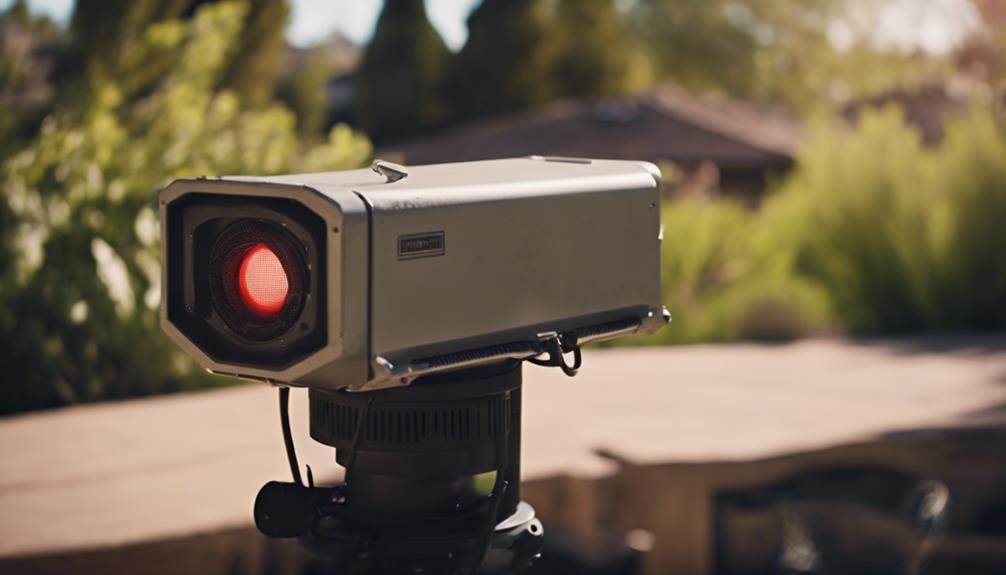Integrated Pest Management (IPM) plays a significant role in St. George, Utah, by offering a comprehensive approach to effectively address pest issues. In this community, where a sense of belonging and environmental stewardship is highly valued, IPM provides a sustainable and responsible method for managing pests.
By combining various strategies such as thorough inspection, regular monitoring, preventative measures, and targeted control methods, IPM aims to minimize the use of potentially harmful pesticides and reduce environmental impacts.
The implementation of IPM practices in St. George ensures the health and well-being of its residents while safeguarding the local ecosystem.
This introduction will explore the importance of IPM, its key components, the benefits of its implementation, successful case studies, and the future of IPM in St. George and beyond.
Key Takeaways
- Integrated Pest Management (IPM) in St. George safeguard public health and protect agricultural productivity.
- IPM focuses on minimizing the use of chemical pesticides and instead, emphasizes preventive measures.
- Implementing IPM practices in St. George helps reduce serious health risks associated with pest infestations and minimizes discomfort caused by bed bugs.
- Successful case studies in St. George highlight the effectiveness of IPM in addressing pest issues and preventing further damage.
Importance of Integrated Pest Management
The importance of Integrated Pest Management (IPM) lies in its ability to safeguard public health and protect agricultural productivity.
IPM plays a crucial role in professional pest control and pest management by utilizing a holistic approach that minimizes the use of chemical pesticides and focuses on preventive measures.
By implementing regular pest control practices, IPM effectively addresses pest infestations, preventing the transmission of diseases carried by pests such as malaria, dengue fever, and Lyme disease. This approach not only protects vulnerable populations such as children and the elderly but also ensures the safety and well-being of the community as a whole.
In agriculture, IPM is vital for promoting healthy crop growth and protecting the food supply by minimizing economic losses caused by pest infestations. By addressing insect outbreaks promptly and effectively, IPM safeguards agriculture from significant economic impact, comparable to natural disasters.
Key Components of IPM in St. George
Integrated Pest Management (IPM) in St. George Utah encompasses several key components that contribute to effective and environmentally friendly pest control practices.
One crucial component is the implementation of customized pest control plans for residential properties. These plans are designed to address specific pest problems in St. George and take into account the unique characteristics of each home.
Additionally, IPM in St. George involves a scientific assessment to identify pests and determine their locations, allowing for targeted strategies to be implemented. This approach ensures that pest control efforts are focused and successful.
Another important component of IPM in St. George is the use of environmentally friendly methods. These methods prioritize the safety and well-being of residents while effectively controlling pests.
Furthermore, ongoing support and guidance are provided to prevent future infestations and maintain a pest-free environment in St. George. This comprehensive approach, combined with the use of the latest tools and technologies for termite control, ensures that IPM in St. George is efficient and reliable.
Benefits of Implementing IPM Practices
Implementing IPM practices in St. George Utah offers numerous benefits for residents and businesses alike.
One of the significant advantages is the reduction in serious health risks associated with pest infestations. Pests such as bed bugs can cause bites that lead to discomfort and potential allergic reactions. Moreover, certain pests carry diseases that can be harmful, especially to vulnerable populations like children and the elderly. By adopting IPM strategies, the risk of these health issues can be minimized.
Additionally, IPM practices prioritize environmentally friendly methods, ensuring the safety and well-being of both clients and the ecosystem. Customized pest control plans are developed for each property, taking into account the unique pest challenges faced by different homes and businesses in St. George.
This tailored approach enhances the effectiveness and efficiency of pest control measures, ensuring prompt service and successful results.
Successful Case Studies of IPM in St. George
Several notable case studies demonstrate the efficacy of IPM practices in St. George, Utah. Integrated Pest Management has proven to be successful in controlling difficult-to-control pests in the area.
One such case study involved the management of a severe termite infestation in a residential neighborhood. By implementing IPM strategies, including regular inspections, targeted treatments, and preventive measures, the pest population was effectively controlled, and further damage was prevented.
Another case study focused on the control of an invasive ant species that had been causing significant problems for local businesses. Through the use of IPM techniques, such as baiting, exclusion, and habitat modification, the ant population was successfully managed, resulting in improved conditions for the affected businesses.
These case studies highlight the importance and effectiveness of integrated pest management in addressing pest issues in St. George, Utah.
Future of IPM in St. George and Beyond
As advancements in pest control techniques and strategies continue to evolve, the future of IPM in St. George and beyond will focus on collaboration and innovation to effectively address new and existing pest challenges while safeguarding agricultural resources and promoting environmental sustainability.
With the increasing impact of climate change and global commerce on pest populations, the implementation of integrated pest management (IPM) will be crucial in protecting crops and minimizing economic losses.
The future of IPM in St. George will see a heightened emphasis on the development and adoption of environmentally friendly methods and technologies. This includes the integration of biological control agents, the use of pheromones and traps for monitoring and detection, and the application of targeted and reduced-risk pesticides.
Additionally, there will be a continued effort to educate and train farmers, pest control professionals, and the public on the principles and practices of IPM to ensure its successful implementation and long-term sustainability.
Frequently Asked Questions
What Is the Role of Integrated Pest Management?
The role of integrated pest management (IPM) is to effectively manage and eliminate pest problems by implementing targeted strategies and customized plans. IPM in agriculture offers numerous benefits, such as reduced pesticide use, improved crop yield, and minimized environmental impact.
What Are the 4 Main Features of IPM Program?
The four main features of an IPM program include a scientific assessment to identify pests, customized plans tailored to unique needs, targeted strategies for effective control, and ongoing support and guidance to prevent future infestations. These features contribute to the benefits, implementation strategies, and effectiveness of IPM programs.
How Does Integrated Pest Management Help the Environment?
Integrated Pest Management (IPM) benefits the environment by promoting sustainable practices that minimize the use of chemical pesticides. By utilizing natural solutions and focusing on prevention, IPM helps maintain a balanced ecosystem and reduces negative impacts on soil, water, and air quality.
What Is a Basic Rule of an Integrated Pest Management Program?
The basic rule of an integrated pest management program is to conduct a scientific assessment to identify pests and determine their locations. This rule is crucial in the implementation process and provides numerous benefits in pest control.




